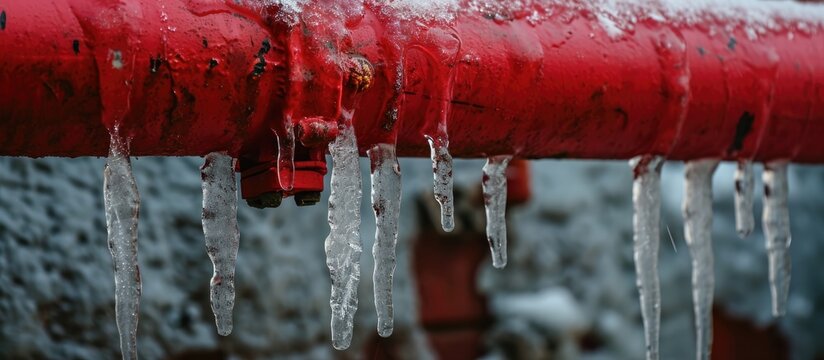Important Advice to Avoid Frozen Pipes in Cold Weather: Specialist Guidance
Important Advice to Avoid Frozen Pipes in Cold Weather: Specialist Guidance
Blog Article
Are you currently searching for resources concerning Prevent Frozen Pipes ?

Winter can damage your plumbing, particularly by freezing pipelines. Here's how to stop it from taking place and what to do if it does.
Intro
As temperatures drop, the danger of icy pipelines increases, possibly leading to costly repair services and water damage. Comprehending just how to stop frozen pipes is vital for homeowners in cold environments.
Recognizing Icy Pipelines
What causes pipelines to ice up?
Pipes ice up when revealed to temperature levels below 32 ° F (0 ° C) for prolonged periods. As water inside the pipes freezes, it increases, putting pressure on the pipe walls and possibly causing them to rupture.
Dangers and problems
Frozen pipelines can cause supply of water interruptions, building damage, and pricey repairs. Ruptured pipelines can flooding homes and cause comprehensive structural damage.
Indicators of Frozen Pipes
Determining icy pipes early can prevent them from rupturing.
How to identify icy pipes
Look for reduced water circulation from taps, uncommon odors or sounds from pipelines, and noticeable frost on revealed pipes.
Prevention Tips
Shielding prone pipes
Cover pipes in insulation sleeves or utilize heat tape to shield them from freezing temperature levels. Concentrate on pipes in unheated or outside areas of the home.
Home heating methods
Maintain indoor rooms adequately heated, especially areas with pipes. Open closet doors to enable cozy air to flow around pipes under sinks.
Protecting Outdoor Plumbing
Garden pipes and outside taps
Detach and drain pipes garden hose pipes before winter months. Set up frost-proof faucets or cover outdoor faucets with protected caps.
What to Do If Your Pipelines Freeze
Immediate actions to take
If you believe frozen pipelines, maintain taps available to soothe stress as the ice melts. Make use of a hairdryer or towels soaked in hot water to thaw pipelines gradually.
Long-Term Solutions
Architectural changes
Consider rerouting pipelines away from outside wall surfaces or unheated locations. Add added insulation to attic rooms, cellars, and crawl spaces.
Upgrading insulation
Purchase premium insulation for pipelines, attic rooms, and walls. Proper insulation helps maintain constant temperature levels and decreases the danger of frozen pipelines.
Final thought
Protecting against icy pipelines needs aggressive actions and quick responses. By comprehending the causes, signs, and safety nets, homeowners can shield their plumbing throughout winter.
5 Ways to Prevent Frozen Pipes
Drain Outdoor Faucets and Disconnect Hoses
First, close the shut-off valve that controls the flow of water in the pipe to your outdoor faucet. Then, head outside to disconnect and drain your hose and open the outdoor faucet to allow the water to completely drain out of the line. Turn off the faucet when done. Finally, head back to the shut-off valve and drain the remaining water inside the pipe into a bucket or container. Additionally, if you have a home irrigation system, you should consider hiring an expert to clear the system of water each year.
Insulate Pipes
One of the best and most cost-effective methods for preventing frozen water pipes is to wrap your pipes with insulation. This is especially important for areas in your home that aren’t exposed to heat, such as an attic. We suggest using foam sleeves, which can typically be found at your local hardware store.
Keep Heat Running at 65
Your pipes are located inside your walls, and the temperature there is much colder than the rest of the house. To prevent your pipes from freezing, The Insurance Information Institute suggests that you keep your home heated to at least 65 degrees, even when traveling. You may want to invest in smart devices that can keep an eye on the temperature in your home while you’re away.
Leave Water Dripping
Moving water — even a small trickle — can prevent ice from forming inside your pipes. When freezing temps are imminent, start a drip of water from all faucets that serve exposed pipes. Leaving a few faucets running will also help relieve pressure inside the pipes and help prevent a rupture if the water inside freezes.
Open Cupboard Doors
Warm your kitchen and bathroom pipes by opening cupboards and vanities. You should also leave your interior doors ajar to help warm air circulate evenly throughout your home.
:strip_icc()/snow-outdoor-faucet-pipes-4af65d1e5e904fb1aa7bf74071fe5d89.jpg)
I discovered that blog entry about Prevent Frozen Pipes while doing a search on the search engines. Be sure to take a moment to share this content if you enjoyed reading it. Kudos for being here. Don't forget to stop by our blog back soon.
Click For More Info Report this page